
August 2011
Welcome to Net Results EXPRESS
Net Results EXPRESS (NRx) is an award-winning, monthly e-newsletter highlighting medical and scientific breakthroughs, major grants and honours awarded, and other research-related events at UHN. Through NRx you can read about ongoing research at our four research institutes, the Ontario Cancer Institute (OCI), the Toronto General Research Institute (TGRI), the Toronto Western Research Institute (TWRI) and the Toronto Rehabilitation Institute (TRI). We hope you will find this newsletter informative and helpful. If you have feedback or questions, please contact www@uhnresearch.ca Christopher J. Paige, PhD, FCAHS
|
Strategic Planning Needs Your Help
To enable this, we’ve created a Strategic Planning web portal where you can tell us your thoughts and ideas about the direction of the research going on at UHN. In addition, you can nominate a ‘futurist’—someone who is a leading edge thinker/expert that we can invite to talk to us about relevant trends, developments, influences and the future direction of research and clinical care. Your input is vital to this process. We encourage you to visit the Strategic Planning web portal to tell us what you think and to encourage your UHN colleagues and staff to do the same. |
Autoimmune Diseases: Explaining the Role of PTPN22 in Immunity
The PTPN22 gene mutation has been shown to confer risk for many common autoimmune diseases including type I diabetes, rheumatoid arthritis, and Graves’ disease. However the exact cause of this association was previously unexplained. Dr. Siminovitch’s work, published in Nature Genetics, shows that the mutation in this gene leads to decreased levels of the PTPN22 gene’s protein product, Lyp, and an abnormal increase in the activation of three key immune cell populations, T-, B- and dendritic cells. Ultimately, depletion of Lyp results in ”hyperactive” immune responses, a key feature of autoimmune disease. ”By creating mice carrying the same PTPN22 gene mutation as humans with autoimmune disease, we were able to delineate the pathway linking the mutation to disease”, explains Dr. Siminovitch. “This information provides the framework for development of new therapeutic interventions designed specifically for patients carrying the PTPN22 mutation, i.e. a ‘personalized’ healthcare approach to treating autoimmune disease.” The autoimmune disease-associated PTPN22 variant promotes calpain-mediated Lyp/Pep degradation associated with lymphocyte and dendritic cell hyperresponsiveness. Zhang J, Zahir N, Jiang Q, Miliotis H, Heyraud S, Meng X, Dong B, Xie G, Qiu F, Hao Z, McCulloch CA, Keystone EC, Peterson AC, Siminovitch KA. Nature Genetics. 2011 Aug 14. [Pubmed abstract] This work was supported by grants from the Canadian Institutes for Health Research, the Canadian Arthritis Network and the Ontario Research Fund. |
Leukemia: Stem Cell Properties Correlate with Disease Outcome
The group performed an analysis to compare the genes expressed in these different cells types and found a list of similarly and dissimilarly expressed genes. From this, they identified a number of genes—a gene signature—associated with the ability of stem cells to continually grow and function long term. When comparing these gene signatures to those of leukemic cells taken from AML patients, they correlated increased stem cell-like properties of cancer with poor prognosis. “Determining the LSC and HSC gene signatures is of significant clinical importance. AML patients with a gene signature similar to that of LSCs will warrant more aggressive therapy.” comments Dr. Dick. This report also suggests that the gene signatures determined for LSC could be used to identify new therapeutic targets specific for these cancer stem cells. Stem cell gene expression programs influence clinical outcome in human leukemia. Eppert K, Takenaka K, Lechman ER, Waldron L, Nilsson B, Galen P, Metzeler KH, Poeppl A, Ling V, Beyene J, Canty AJ, Danska JS, Bohlander SK, Buske C, Minden MD, Golub TR, Jurisica I, Ebert BL, Dick JE. Nature Medicine. 2011 Aug 28. [Pubmed abstract] This work was supported by grants from the Ontario Research Fund, the Leukemia and Lymphoma Society, the Stem Cell Network of Canadian National Centres of Excellence, the Canadian Cancer Society Research Institute, the Princess Margaret Hospital Foundation, the Ministry of Education, Culture, Sports, Science and Technology in Japan, the Terry Fox Foundation, Genome Canada, the Ontario Institute for Cancer Research, the Canadian Institutes for Health Research, the Canada Foundation for Innovation, IBM and the Ontario Ministry of Health and Long Term Care. |
Immunity: Identifying the Mechanisms Involved in Inflammation of the Colon
TSLP, a protein previously defined as a regulator of immune processes, was found in the current study to play a role in intestinal healing in mice suffering from UC. Additionally, the group showed that TSLP works in concert with SLPI to promote healing of tissue damage by inflammation. Treatment of mice suffering from UC with a synthetic form of SLPI, a protein known to protect cells from the destructive effects of inflammation, improved tolerance of the disease and decreased the incidence of death. "Current treatment options for IBD are limited due to the unknown causes of this disease," says Dr. Mak. "The results of this study indicate a mechanism regulating the inflammatory effects of IBD, which improves our understanding of the disease and presents two new targets that could be used for the development of drugs to treat IBD." Thymic stromal lymphopoetin-induced expression of the endogenous inhibitory enzyme SLPI mediates recovery from colonic inflammation. Reardon C, Lechmann M, Brüstle A, Gareau MG, Shuman N, Philpott D, Ziegler SF, Mak TW. Immunity. 2011 Aug 3. [Pubmed abstract] This work was supported by a grant from the Canadian Institutes of Health Research, the Princess Margaret Hospital Foundation and the National Institutes of Health. |
Spondyloarthritis: Impact on Social Life
The SRPQ evaluates the degree of participation in social situations, such as relationships, employment and community role, as well as the importance of these factors to patients. The research team, which also included AARC Scientists Drs. Monique Gignac, Elizabeth Badley, Dafna Gladman and Robert Inman, assessed the effectiveness of this questionnaire on 109 patients with SpA. They concluded that patients with SpA recognize the importance of their involvement in social activities and that the SRPQ is an effective method for measuring this. "The significance of this study is that we now have a tool that will allow us to examine the long term impact of this disease on the satisfaction of social participation in people with SpA," comments Dr. Davis. "The SRQP could also be used to determine the effectiveness of disease therapy on the quality of life of patients." Measuring participation in people with spondyloarthritis using the social role participation questionnaire. Davis AM, Palaganas MP, Badley EM, Gladman DD, Inman RD, Gignac MA. Annals of the Rheumatic Diseases. 2011 Jul 25. [Pubmed abstract] This study was supported by a National Research Initiative grant from the Arthritis Society to Spondyloarthritis Research Consortium of Canada. |
Radioisotope Therapy: The Future of Antibody Linked Radiotherapy
The study examined the effectiveness of an antibody-linked radioisotope targeted to the cells responsible for AML, known as leukemia stem cells (LSCs). Antibody-linked radioisotopes are molecules physically linked with radioisotopes. The radioactive isotope used in this study only kills cells in close range, and combined with an antibody it can selectively target cancer cells while leaving healthy cells untouched. In hopes of further improving the effectiveness of the treatment, Dr. Reilly’s team altered the antibody so that it would be internalized by the cells and targeted to the nucleus, where the radioisotope would be more likely to kill the cell. Using a special scanner the group was able to visualize the precise location of the drug within mice with AML. Their results showed that the radioisotope was correctly targeted to sites of disease and was also able to kill isolated leukemic cells. "This work moves us one step further towards the use of antibody-linked radioisotopes as an effective and customizable treatment for patients with AML, as well as other types of cancer," adds Dr. Reilly. Auger electron radioimmunotherapeutic agent specific for the CD123+/CD131- phenotype of the leukemia stem cell population. Leyton JV, Hu M, Gao C, Turner PV, Dick JE, Minden M, Reilly RM. Journal of Nuclear Medicine. 2011 Aug 4. [Pubmed abstract] This study was supported by a grant from the Canadian Institutes of Health Research. |
Osteoporosis: Better Prevention from Future Injury
36 small community hospitals participated in the study and included adults over the age of 40 suffering from a low trauma fracture. Patients at half of the hospitals received counseling about fall prevention but not about osteoporosis. The remaining patients were asked to complete a questionnaire, received counseling about their risk of osteoporosis and were asked to follow up with their physician. This enhanced counseling and follow up care resulted in an increase in the number of patients appropriately managed following their initial fracture. "This combination of different interventions, where you have a triad of a coordinator, patient and primary care physician, should be evaluated as a model for improving management for other chronic diseases," says Dr. Jaglal. "This is particularly true among physicians in smaller communities with limited access to specialist care." Impact of a centralized osteoporosis coordinator on post-fracture osteoporosis management: A cluster randomized trial. Jaglal SB, Donescu OS, Bansod V, Laprade J, Thorpe K, Hawker G, Majumdar SR, Meadows L, Cadarette SM, Papaioannou A, Kloseck M, Beaton D, Bogoch E, Zwarenstein M. Osteoporosis International. 2011 Jul 16. [Pubmed abstract] This study was supported by a grant from the Ontario Ministry of Health and Long-Term Care Osteoporosis Strategy. |
 |
![]()
| Roche Canada Makes Generous Donation to UHN Research |
About this contribution, Dr. Neel, Director of the Ontario Cancer Institute, says, "I think this donation speaks to Roche Canada's continuing commitment to health care and medical research. It is great to see that so many labs have been able to take advantage of this opportunity in upgrading some of their equipment." Ronnie Miller, President and CEO at Roche Canada, states: "We hope that some of the items will help contribute to the leading edge research conducted at Princess Margaret Hospital and The Campbell Family Institute." On behalf of all who have benefited from Roche’s gift, thank you! The equipment will be put to good use. |
| TRI Scientist Receives New Appointment |
The CSEB fosters epidemiological and biostatistical research and practice in Canada. They promote epidemiology and biostatistics at all levels of government, academia and industry, and bridge both the research and practice aspects of their disciplines through close collaboration with other health agencies. TRI became UHN’s latest partner following integration on July 1st 2011. |
Feedback
Net Results EXPRESS is brought to you by UHN Research Communications. We hope you have enjoyed receiving this message. If you have any feedback, please email www@uhnresearch.ca.
To access archived issues of Net Results EXPRESS, visit uhnresearch.ca/news/netresultsexpress
Some images adapted from the image archives of stock.xchng.ca.
 UHN is currently undergoing a strategic planning exercise to create The Research Hospital of the Future—this is the hospital that we want to see UHN become in the next 15-20 years. In doing so, we need input from all across UHN—this includes everyone from those with clinical responsibilities to those with research, technical and/or administrative responsibilities. We need your input to all sorts of questions like, “What should it look like?”, “What do we need to do to get there?” and “How will we get there?” We want to hear your ideas about these types of questions. Your input will help us create the ‘roadmap’ leading us into 2016 that will shape the future of UHN Research over the next two decades.
UHN is currently undergoing a strategic planning exercise to create The Research Hospital of the Future—this is the hospital that we want to see UHN become in the next 15-20 years. In doing so, we need input from all across UHN—this includes everyone from those with clinical responsibilities to those with research, technical and/or administrative responsibilities. We need your input to all sorts of questions like, “What should it look like?”, “What do we need to do to get there?” and “How will we get there?” We want to hear your ideas about these types of questions. Your input will help us create the ‘roadmap’ leading us into 2016 that will shape the future of UHN Research over the next two decades.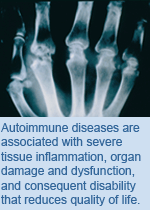 A new study from the lab of TGRI Senior Scientist and AARC Researcher Dr.
A new study from the lab of TGRI Senior Scientist and AARC Researcher Dr. 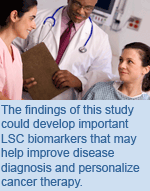 McEwen Centre for Regenerative Medicine Investigator and UHN Senior Scientist Dr.
McEwen Centre for Regenerative Medicine Investigator and UHN Senior Scientist Dr.  The causes of Inflammatory Bowel Disease (IBD)—a group of inflammatory conditions that affect the colon and small intestine, including ulcerative colitis (UC) and Crohn’s disease—remain unknown. A recent study by OCI Senior Scientist and Director of the Campbell Family Institute for Breast Cancer Research Dr.
The causes of Inflammatory Bowel Disease (IBD)—a group of inflammatory conditions that affect the colon and small intestine, including ulcerative colitis (UC) and Crohn’s disease—remain unknown. A recent study by OCI Senior Scientist and Director of the Campbell Family Institute for Breast Cancer Research Dr. 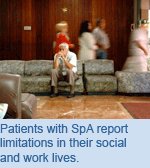 Onset of spondyloarthritis (SpA), a disease involving the inflammation of joints, often occurs earlier in adulthood when family and relationships, employment and social and leisure activities play a predominant role. Onset of this disease can negatively impact these aspects of life. Determining how patients with SpA participate in social situations is of great importance in evaluating the effectiveness of disease treatment. A study led by TWRI Senior Scientist and AARC Scientist Dr.
Onset of spondyloarthritis (SpA), a disease involving the inflammation of joints, often occurs earlier in adulthood when family and relationships, employment and social and leisure activities play a predominant role. Onset of this disease can negatively impact these aspects of life. Determining how patients with SpA participate in social situations is of great importance in evaluating the effectiveness of disease treatment. A study led by TWRI Senior Scientist and AARC Scientist Dr. 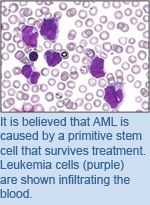 Work carried out by Dr. Jeffrey Leyton, a post-doctoral fellow in the laboratory of Dr.
Work carried out by Dr. Jeffrey Leyton, a post-doctoral fellow in the laboratory of Dr. 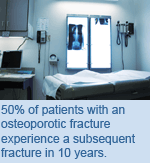 Osteoporosis is a condition in which there is a loss of bone density and can result in bones that are more prone to fractures, and primarily affects older populations. A low trauma fracture resulting from a fall from a standing position or lower should be a signal to physicians to initiate osteoporosis treatment in order to prevent fractures from reoccurring. A study led by TRI Senior Scientist Dr.
Osteoporosis is a condition in which there is a loss of bone density and can result in bones that are more prone to fractures, and primarily affects older populations. A low trauma fracture resulting from a fall from a standing position or lower should be a signal to physicians to initiate osteoporosis treatment in order to prevent fractures from reoccurring. A study led by TRI Senior Scientist Dr.  Roche Canada, a leading biotechnology company, has made a generous donation of over $289,000 to UHN Research. This donation includes microscopes, medical freezers, incubators, and biosafety cabinets. A number of UHN researchers have benefited from this donation, including Drs. Laurie Ailles, John Dick, Benjamin Neel, Brian Raught, Ming-Sound Tsao and Bradly Wouters, as well as the core UHN facilities labs.
Roche Canada, a leading biotechnology company, has made a generous donation of over $289,000 to UHN Research. This donation includes microscopes, medical freezers, incubators, and biosafety cabinets. A number of UHN researchers have benefited from this donation, including Drs. Laurie Ailles, John Dick, Benjamin Neel, Brian Raught, Ming-Sound Tsao and Bradly Wouters, as well as the core UHN facilities labs. Toronto Rehabilitation Institute (TRI) Senior Scientist Dr. Susan Jaglal has been elected the President of the Canadian Society of Epidemiology and Biostatistics (CSEB). Dr. Jaglal is a Full Professor in the University of Toronto’s Department of Physical Therapy with cross-appointments to the Graduate Department of Rehabilitation Science and Department of Health Policy, Management and Evaluation and the Dalla Lana School of Public Health. She also holds the TRI Chair at the University of Toronto. Dr. Jaglal’s field of research includes osteoporosis and rehabilitation health services, with a focus on investigating the appropriateness and effectiveness of current services.
Toronto Rehabilitation Institute (TRI) Senior Scientist Dr. Susan Jaglal has been elected the President of the Canadian Society of Epidemiology and Biostatistics (CSEB). Dr. Jaglal is a Full Professor in the University of Toronto’s Department of Physical Therapy with cross-appointments to the Graduate Department of Rehabilitation Science and Department of Health Policy, Management and Evaluation and the Dalla Lana School of Public Health. She also holds the TRI Chair at the University of Toronto. Dr. Jaglal’s field of research includes osteoporosis and rehabilitation health services, with a focus on investigating the appropriateness and effectiveness of current services.